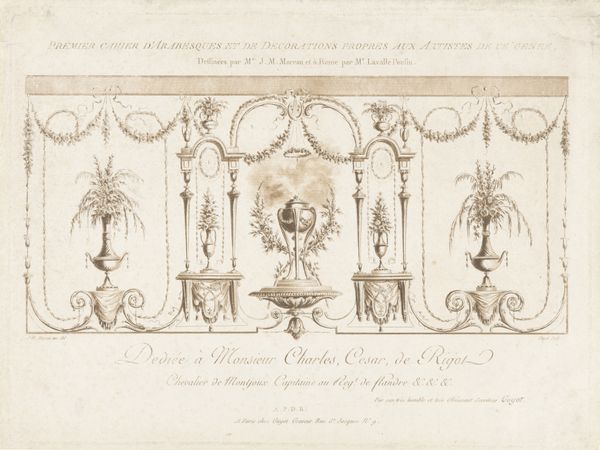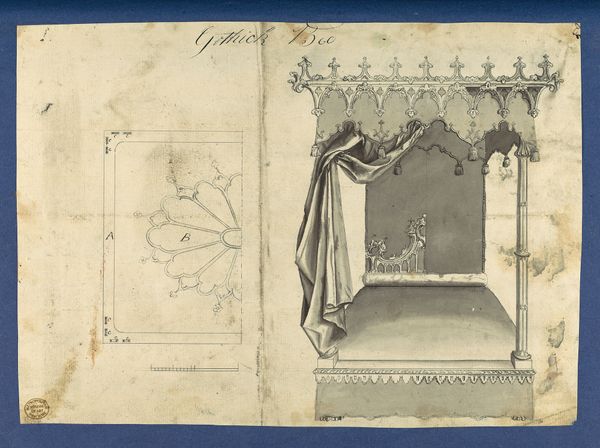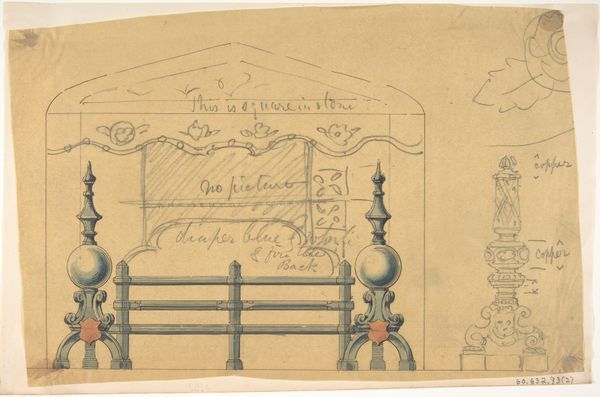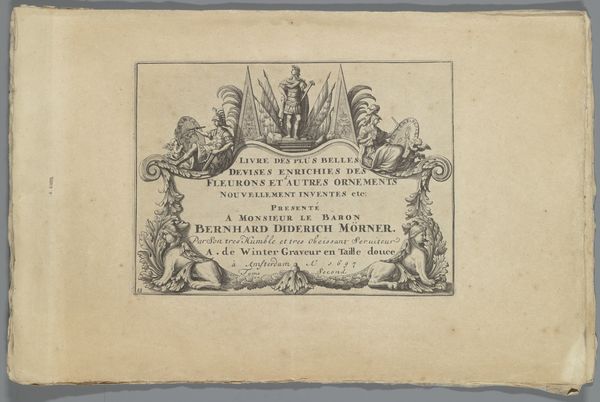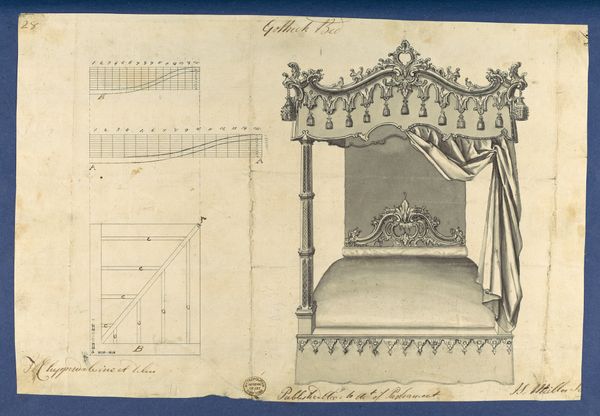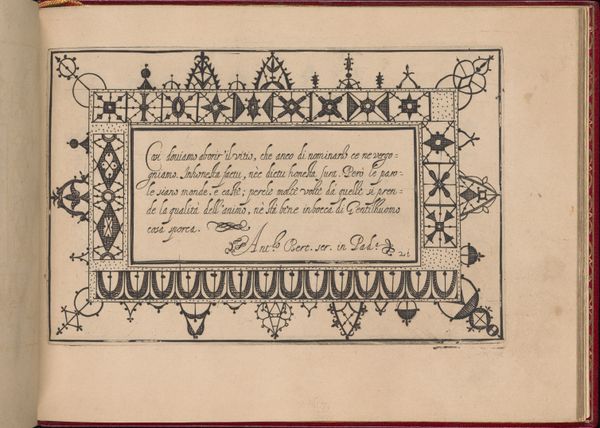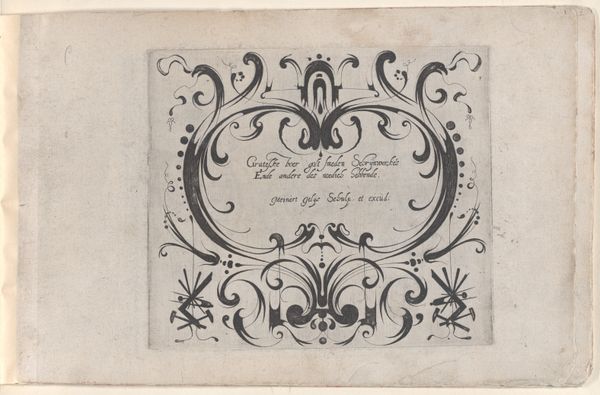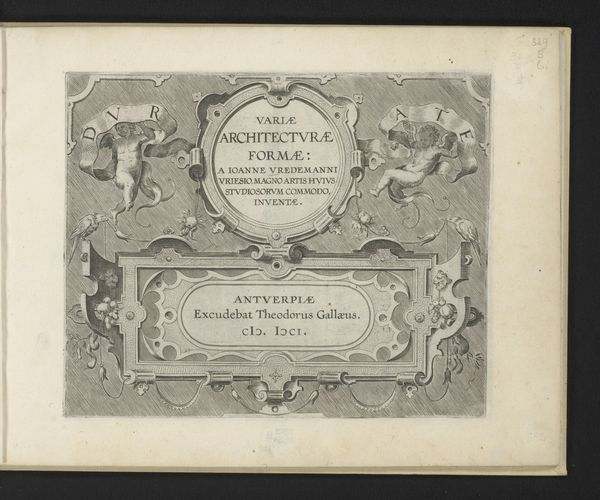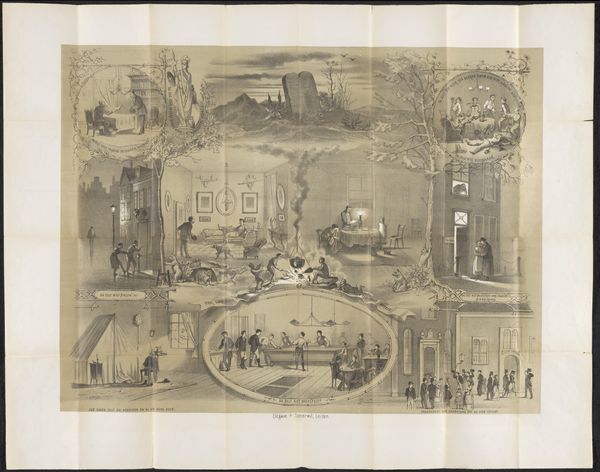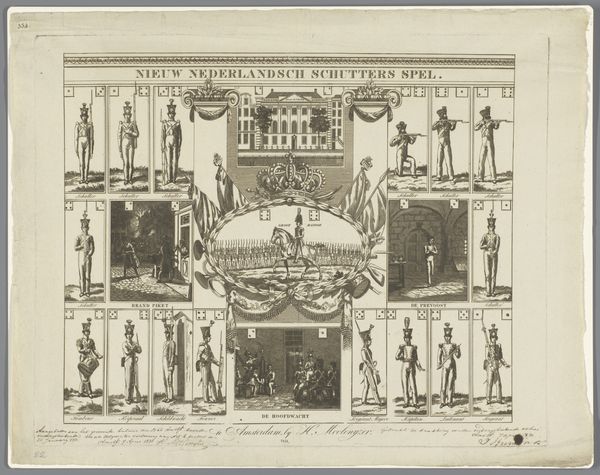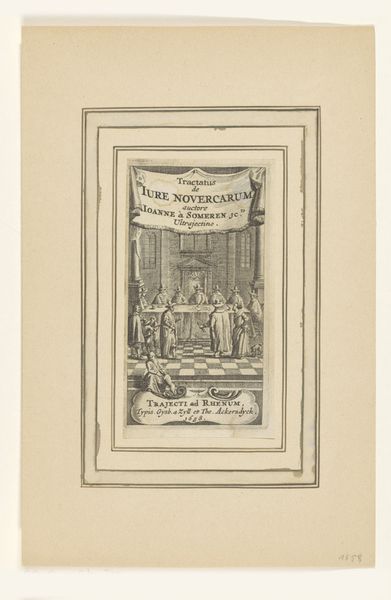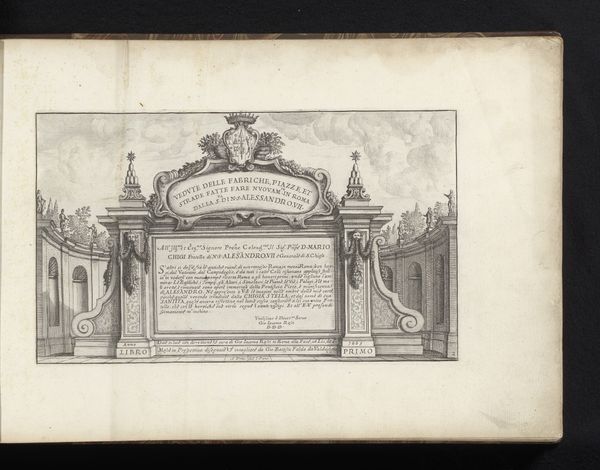
drawing, print, ink, pen
#
drawing
#
neoclacissism
#
aged paper
#
toned paper
# print
#
sketch book
#
form
#
personal sketchbook
#
ink
#
pen-ink sketch
#
ink colored
#
line
#
pen work
#
sketchbook drawing
#
pen
#
storyboard and sketchbook work
#
sketchbook art
Dimensions: height 165 mm, width 217 mm
Copyright: Rijks Museum: Open Domain
Editor: This is "Titelprent met zeven vazen en schalen op een verhoging," an 1817 print drawing by Pietro Ruga. The ink is faded on this toned paper, lending the collection of objects a ghostly quality. It looks almost like a catalog. What symbols or cultural memories do you see reflected in these shapes? Curator: Indeed, this piece invites us to consider the enduring power of forms. Notice the arrangement of these vessels. They aren’t randomly placed, are they? Consider the central position of the covered dish—an object that suggests both containment and ritual. The surrounding vases and ewers, echoing classical shapes, whisper of ancient Greece and Rome. Editor: So, the shapes themselves carry meaning? The artist isn't just drawing pretty vases? Curator: Precisely! The neoclassical style, in which this print is rooted, sought to revive the perceived moral purity and aesthetic ideals of the classical world. These aren't merely decorative items, they are signifiers of a cultural longing for order, reason, and perhaps even a lost sense of grandeur. Even the garland across the top--a common symbol for celebration of nature in roman art is very prominent here. Editor: So by looking at the images the artist decided to include and the way he depicts them, we learn more about what values and cultures are important to him? Curator: Yes! It’s also worth asking, why depict these objects? What purpose do they serve "sacri e profani"—"sacred and profane" as the text indicates. These aren’t presented as archaeological finds but as potential models, suggesting a continuity of cultural values for everyday life ("per usi comuni della vita"). Editor: That makes me look at this in a new way. I didn't realize there was so much intentionality behind images. Thank you! Curator: And thank you for engaging with the image. By unpacking these symbols, we discover how the past continues to shape our present visual language.
Comments
No comments
Be the first to comment and join the conversation on the ultimate creative platform.
